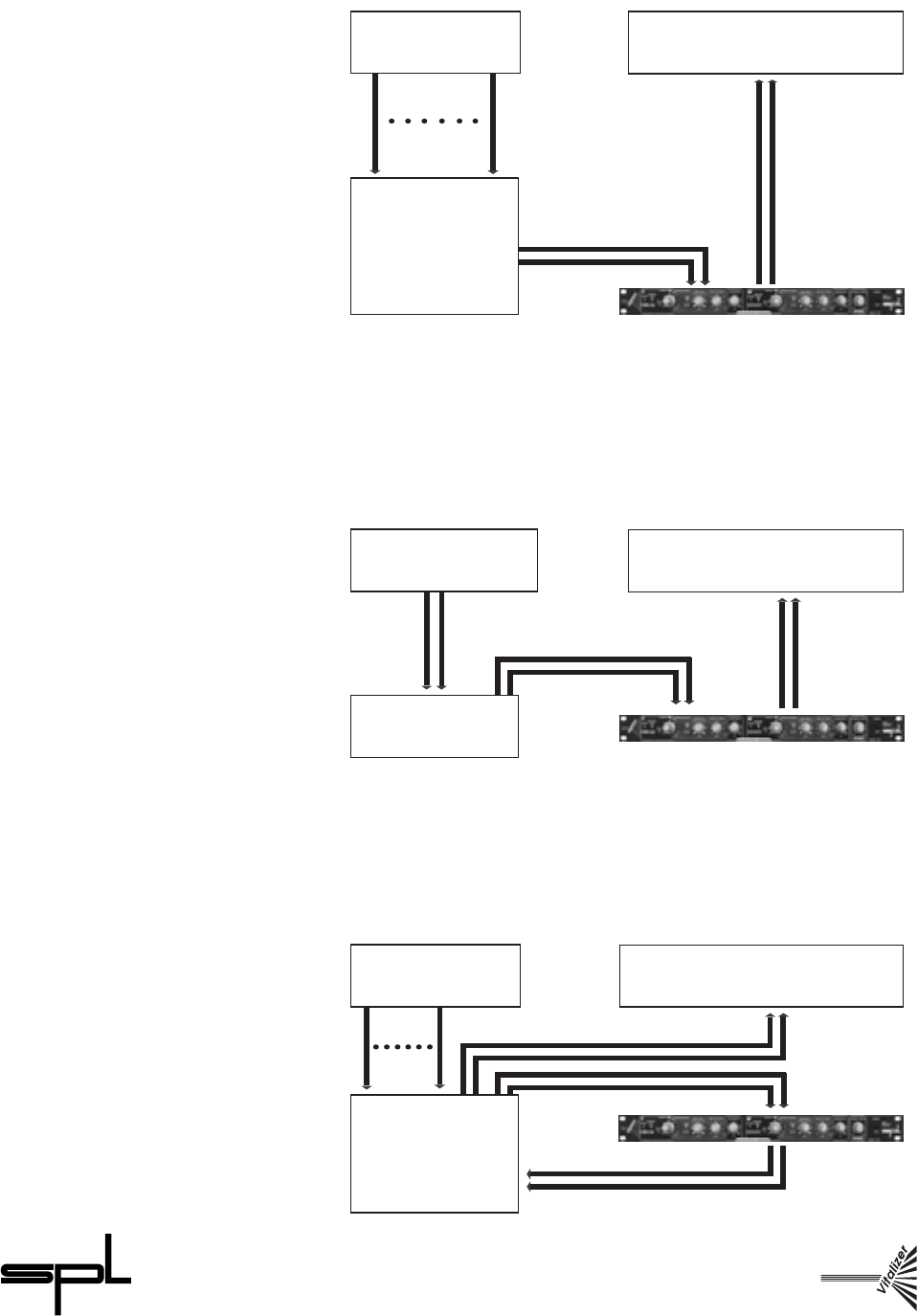
Studio Application 3:
The VITALIZER connected
to the Master or Subgroup
Inserts of the consoles
Multitrack
Console
Recorder
Inputs (L+R)
Vitalizer Outputs
Master Outputs (L+R)
Vitalizer Inputs
Master or Subgroup Insert Sends
Master or Subgroup-Insert Returns
6
®
1.The most obvious application of the VITALIZER is to process a
final stereo mix, either while mixing or during post-production
prior to cutting. It is important to use full-range monitors to assess
the effect of any bass processing since it is valuable to occasionally
switch the processor in and out of circuit in order to appreciate
how much processing has been added.The brain-hearing system
soon acclimatises to changes in timbre – processing is easily over-
done! It is recommended to refer frequently to known recordings.
2. Another popular stereo application is the processing of existing
master tapes during post-production such as remastering archive
material for CD release. If a single-ended noise reduction system
is used to clean up the original, the VITALIZER can make a signifi-
cant contribution in restoring the high end detail that invariably
suffers during such treatment.
3. When processing stereo-mixes it is recommended to patch the
VITALIZER into the master-breaks of the console. Mostly these
breaks are switched pre-fader, so that the monitoring volume
does not affect the processing intensity, which would be the case
when using the VITALIZER on the master outputs of the console.
Applications
Studio Application 1:
VITALIZER between console
(master outputs) and recorder
Studio Application 2:
The VITALIZER between Noise
Reduction and Recorder to
improve archived recordings
Archived Recording
Noise Reduction
Recorder
Recorder Inputs
(L+R)
Vitalizer
Outputs (L+R)
Outputs (L+R)
Vitalizer
Inputs (L+R)
Inputs
(L+R)
Outputs
(L+R)
Multi-Track
Console
Recorder
Recorder
Inputs (L+R)
Master Outputs (L+R)
Vitalizer Inputs (L+R)
Vitalizer
Outputs (L+R)
Recording Studio

















